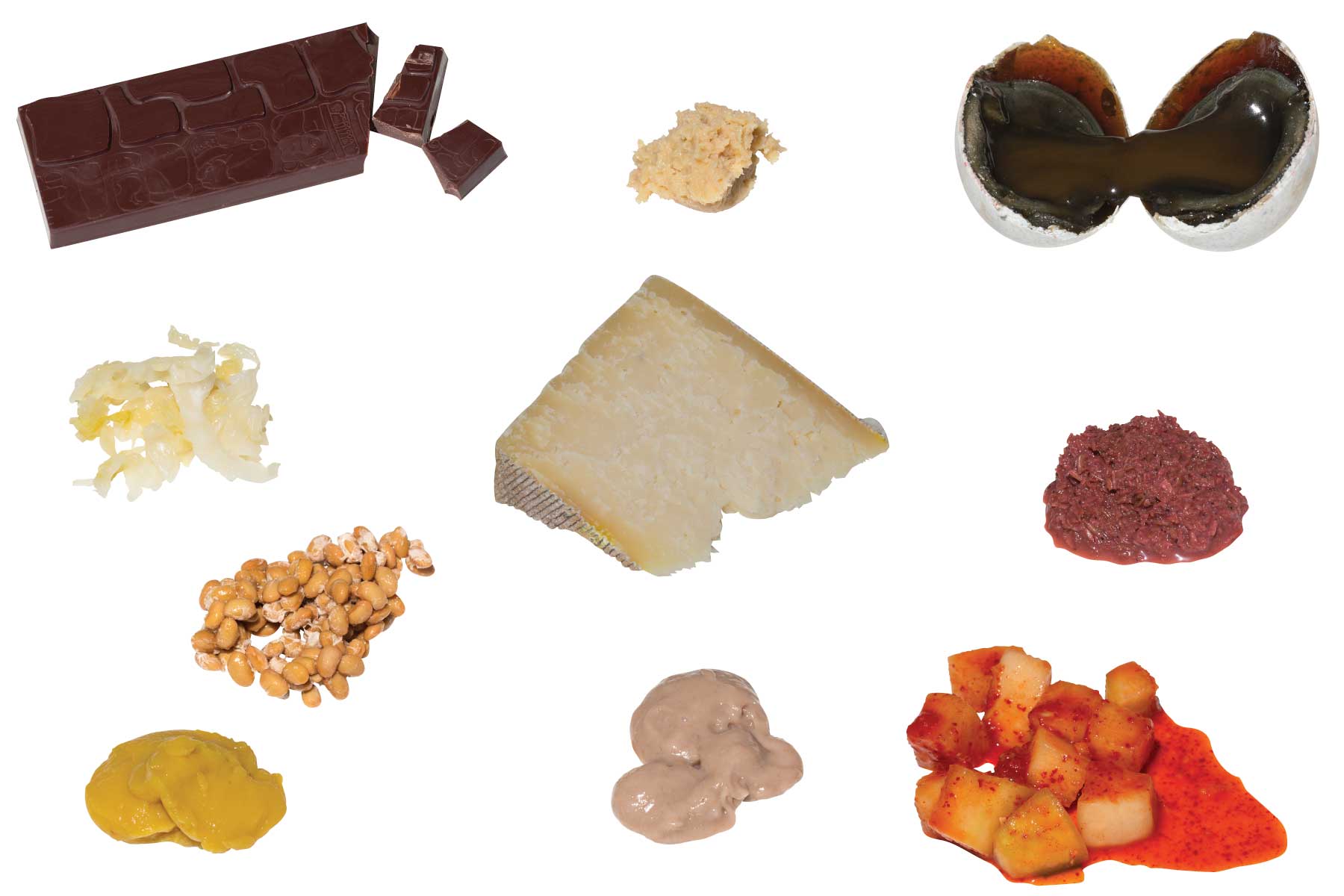Images by Jonas Maon
For fermentation educator Ryan Peters, who lives in Kailua on O‘ahu, it is always a good time to ferment your foods; apocalypse would just allow for greater creativity. From sauerkraut to fish sauce to mead, long-lasting fermented staples have been part of independent cultures for thousands of years. The process actually adds nutrients to foods. Our gut evolved in anticipation of a healthy dose of probiotics (read: bacteria and yeast) from fermented foods such as sour poi to protect it from pathogens.
So, if the lights go out and your pantry is looking paltry, here is what Peters recommends: Dig yourself an underground cellar (essential for the cooler temperatures and consistent humidity that fermentation requires) and start gathering. Begin by looking for starches like taro, cassava, breadfruit, and pipinola, known more commonly as chayote. To make fermented breadfruit, a Pacific tradition, dig a pit, line it with banana leaves, and toss in ripe breadfruit that has been peeled and pitted (if you have time, soak it in seawater for 12 to 24 hours, in accordance with how it’s prepared in the Micronesian atolls). Top with banana leaves and cover. The resulting fermented breadfruit paste will last years, if not decades.
Next, go wild boar hunting. Once you snag one, you talented survivor, butcher it and dice the meat into very small pieces. Add found or grown herbs like rosemary or ginger, which introduce the lactobacillus needed for lactic-acid fermentation; spices like turmeric and pepper; salt, which deter unwanted bacteria; and sugar, which will feed the lactobacillus; and stuff it all into a casing of cleaned-out intestine. According to Peters, a temperature of about 60 degrees Fahrenheit is ideal for fermenting this sausage, so place it in that underground cellar you just dug. After it sours and smells fine again, your wild boar salami is safe to eat.
Do you have, or did you find, a beehive? You are in luck—you can make mead. If not, gather fallen fruit to make your own wine. Worst comes to worst, you can even make cassava beer with your saliva, the method used by numerous indigenous cultures in South America. Cook and then chew up the starchy carb, spit into a vessel, add some water, and let it ferment. Fermentation is key if you plan on eating a fair amount of cassava, as it dramatically reduces the cyanogenic glycosides—which form cyanide—found naturally in the root.
Another labor-intensive but arguably more tasty option is pigeon pea tempeh. Pigeon pea is used as a cover crop and is also found wild around the islands, especially along roads or ditches. For tempeh, substitute beans harvested from the plant in place of soybeans. Originating in Indonesia, tempeh is traditionally made with mold-hosting Hibiscus tiliaceus leaves (identifiable by a flower that is bright yellow with a red center at the beginning of the day, eventually fading from orange to red before falling off). After removing the peas from their casing, wrap them into a dense block using three to four hibiscus leaves with the mold on their undersides. Once you see a white mat of mycelium, the vegetative part of a fungus, on the exterior of the block and between the peas, it is ready to eat.
Last but not least, poi. Even today, according to Peters, sour poi is one of the best options around when it comes to a healthful staple. Taro is hypoallergenic, and sour poi is both host to healthy bacteria and dense in nutrients. “A spoonful a day will give you an equivalent to almost any probiotic supplements,” he says. Put it in a smoothie or take it straight, post-apocalypse or right away.
Learn more at facebook.com/ferment2be. Peters also offers occasional workshops, one-on-one Skype sessions, or in-person classes.
LOCAL FERMENTED FOODS

1. Hawaiian dark chocolate, made by Madre Chocolate 2. Miso, purchased at Foodland 3. Preserved duck egg, or pidan, purchased in Honolulu’s Chinatown 4. Homemade sauerkraut, made by Ryan Peters of Ferment To Be 5. Natural rind tomme cheese, made by Naked Cow Dairy 6. Salted shrimp fry, or bagaoong, purchased at Foodland 7. Natto, made by Aloha Tofu 8. Hand-pounded poi (poi is only fermented if left to sour), made by Waiahole Poi Factory 9. Oppot (fermented breadfruit), made by Paco’s 10. Homemade daikon kimchee, made by FLUX editor-in-chief’s fiancé’s mother
Note: An earlier version of this story incorrectly identified Ryan Peters as Ryan Jacobs in the credit for the homemade sauerkraut.
This story is part of our Apocalypse Issue.

